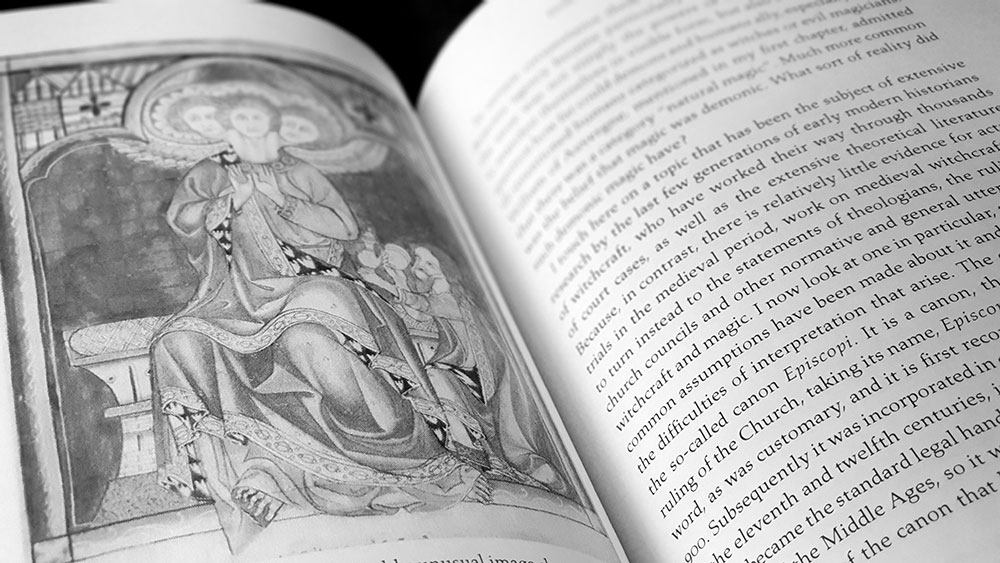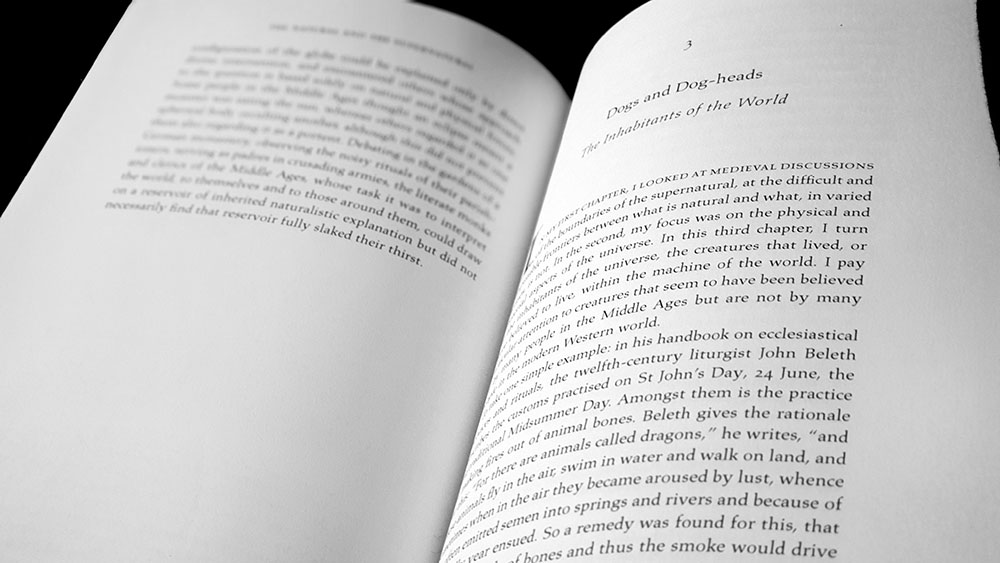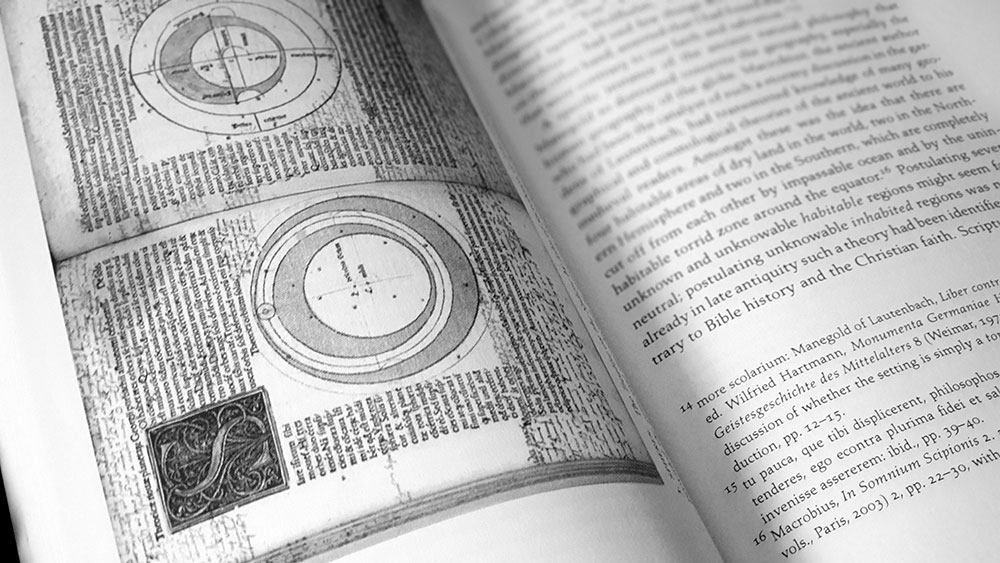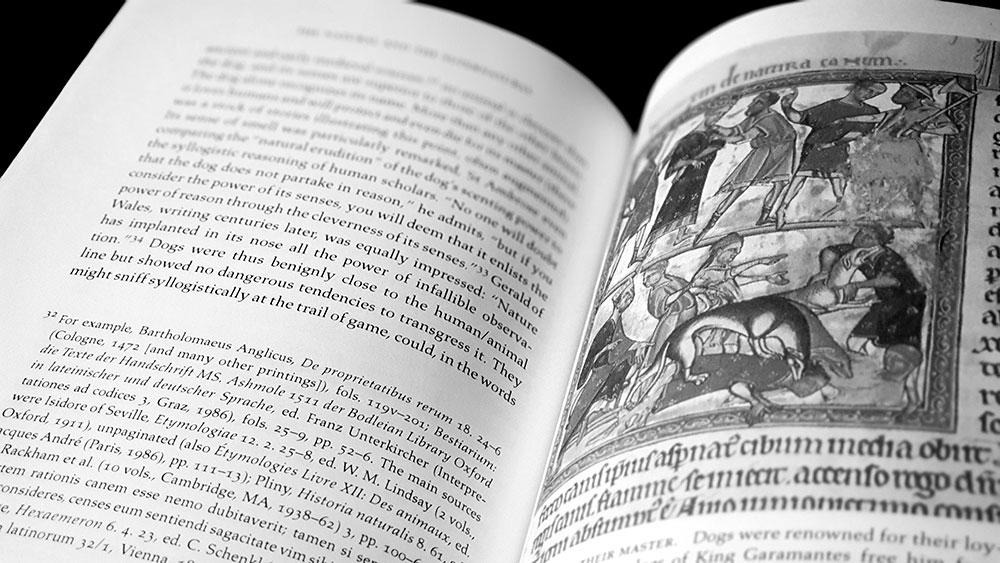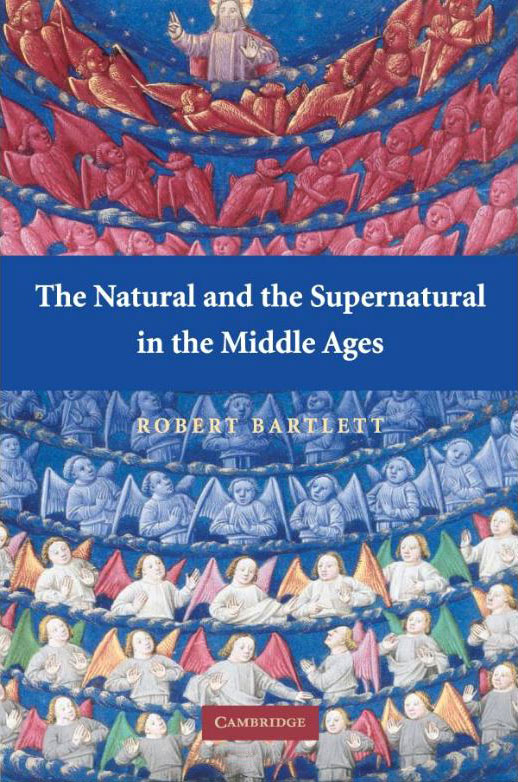 This book compiles a series of Wiles Lectures presented in 2006 at Queen’s University of Belfast by historian and medievalist Robert Bartlett. The lecture series was founded in 1953 by Janet Boyd of Craigavad, County Down, in memory of her father, Thomas S. Wiles, and are sponsored by the university and published (often in extended and modified form) by Cambridge University Press. Despite running to 170 pages, The Natural and the Supernatural in the Middle Ages feels concise, which is perhaps to be expected given its lecture transcript format, and also because the last 22 pages consist of the bibliography and index. With just four chapters, Bartlett presents the information here as clearly defined considerations of medieval embodiments of the supernatural, each lecture building, for the most part, upon the last.
This book compiles a series of Wiles Lectures presented in 2006 at Queen’s University of Belfast by historian and medievalist Robert Bartlett. The lecture series was founded in 1953 by Janet Boyd of Craigavad, County Down, in memory of her father, Thomas S. Wiles, and are sponsored by the university and published (often in extended and modified form) by Cambridge University Press. Despite running to 170 pages, The Natural and the Supernatural in the Middle Ages feels concise, which is perhaps to be expected given its lecture transcript format, and also because the last 22 pages consist of the bibliography and index. With just four chapters, Bartlett presents the information here as clearly defined considerations of medieval embodiments of the supernatural, each lecture building, for the most part, upon the last.
The Natural and the Supernatural in the Middle Ages is very much about definitions and Bartlett provides a thorough consideration of this in the first section, The Boundaries of the Supernatural. Here, he discusses how what could be defined as supernatural occupied a minute space in medieval thought, mediated, as it was, through the idea of nature and by extension, what was considered natural, being of god. If god made all things, the thinking went, then very few things, whether they be angels, demons, or showers of fish, could be considered supernatural, that is, beyond or outside his remit. Indeed, the distinction was not necessarily between the natural of god and the supernatural that was not of god, but, as defined by the 12th century theologian Peter Lombard, between those things that were comprehendible, in that they occurred naturally (naturaliter), following their seminal cause that had been established by god, and those things that were beyond nature (praeter naturam). Things defined as beyond nature were only so because their cause was unknown to humanity, though it was assumed that this still derived from god, who alone understood their cause and purpose. Bartlett tracks these lines of thought from Lombard to Thomas Aquinas and later into the writings of figures like William of Auvergne, where the discussion turns to the use of miracles and magic. Here, in a remarkably pragmatic interpretation, magic was not miraculous or supernatural, and instead, natural magic was simply a branch of natural science, in which natural processes, ordained by god, were just sped up.
This focus on definitions can make The Natural and the Supernatural in the Middle Ages very methodical and clinical, and one could even say, given the subject matter, dull; though mileage may vary as to whether it’s so dull that you might wish, as one reader on goodbooks.com suggests, to have your eyes gouged out with a teaspoon rather than having to pick it up again. This does mean that the focus on specific supernatural, monstrous or aberrant elements from the Middle Ages is rather limited, but there are far better books from the hoard of medieval scholarship that provide exactly what this title lacks. With that said, for what it is, a non-specific overview of the miraculous in the Middle Ages, the book makes an interesting if detached read, well-written by Bartlett, who presents his information in a perfunctory manner, divorced from more obvious theoretical models.
The more specific examples of the supernatural are considered in the second and third chapters, taking the form of eclipses and the dog-headed cynocephali. The discussion of eclipses and their view in medieval superstition and science, though, comes as part of a broader consideration of the belief in a mechanical universe that predates Newton’s popularisation of the idea. In The Machine of this World, Bartlett isn’t seeking to prove that an idea of anything approaching Newtonian physics existed in the Middle Ages, but simply that there were some mechanistic principles that were seen as playing a role in the medieval world view. Overwhelming examples are pretty thin on the ground, other than the predictive nature of eclipses, and Bartlett spends more of this chapter enunciating various understandings of the world and their theological implications, such as the globe’s division into the northern hemisphere and its unreachable southern counterpart.
For fans of medieval monstrosity, Dogs and Dog-Heads turns to the cynocephali, one of several races that, based on the unblinking acceptance of the authority of classical figures such as Pliny and Herodotus, were believed to exist somewhere else in the world. The existence of these races and the lack thereof proved so fundamental to changing views of the world, with the 14th century explorer Giovanni de’ Marignolli enquiring fruitlessly after them in India, only to pithily remark that it was he who was in turn asked as to whether he knew of such creature. The Other always being where one is not.
Bartlett’s concluding chapter seems the furthest from expectations of supernatural medieval marvels with a lecture dedicated entirely to the work of the 13th century philosopher Roger Bacon. While there are supernatural elements within this discussion, most notably the incongruous but inevitable intersection visible in a man of empirical science who still believed in and speculated on the imminent arrival of the Antichrist, this chapter feels like a standalone biography of Bacon somewhat shoe-horned into the series.
The Natural and the Supernatural in the Middle Ages is illustrated throughout with various images drawn from medieval manuscripts. In all, it makes for a brief, sober and pragmatic read that works best when seen as a presentation of a broad picture, rather than a consideration of specifics.
Published by Cambridge University Press
